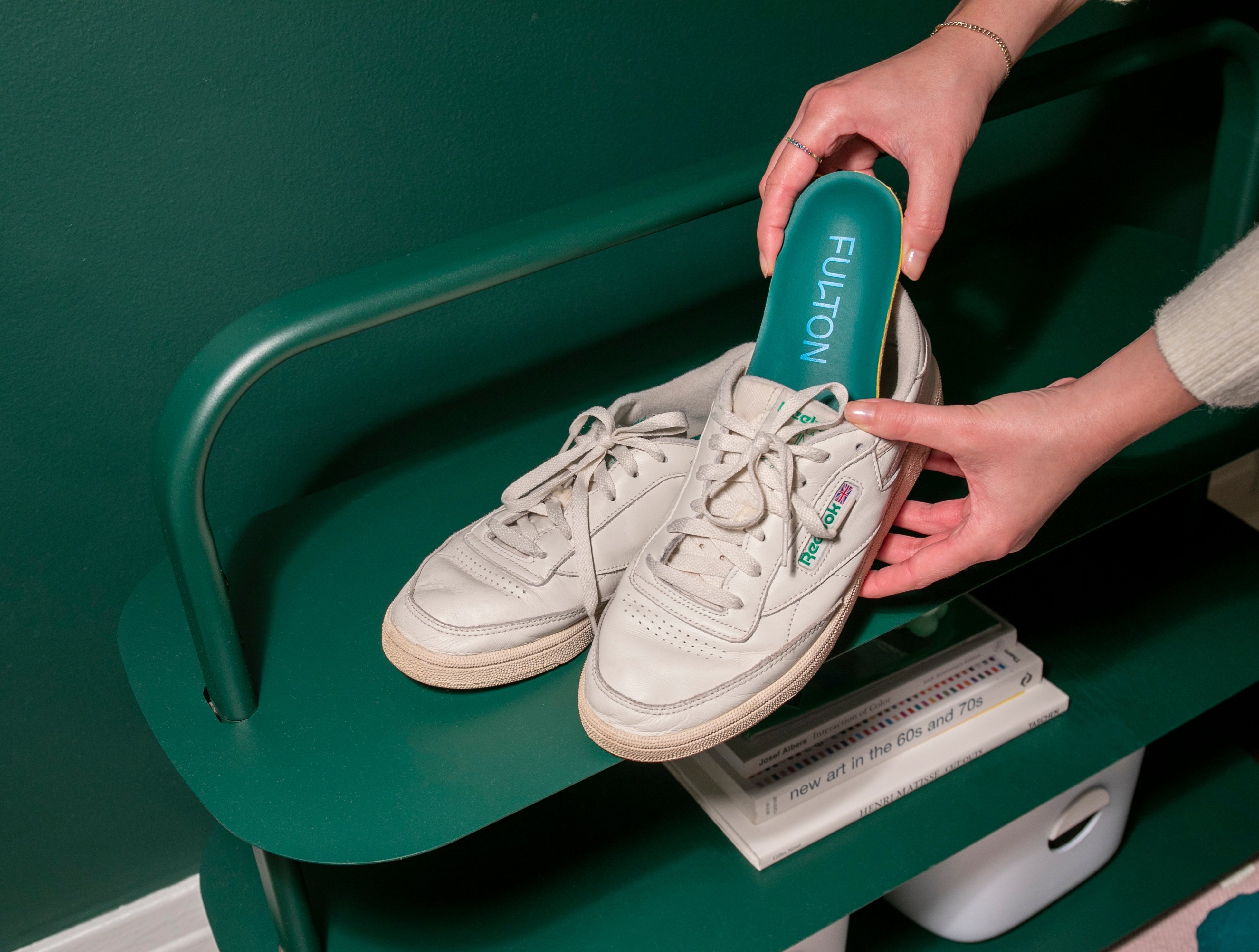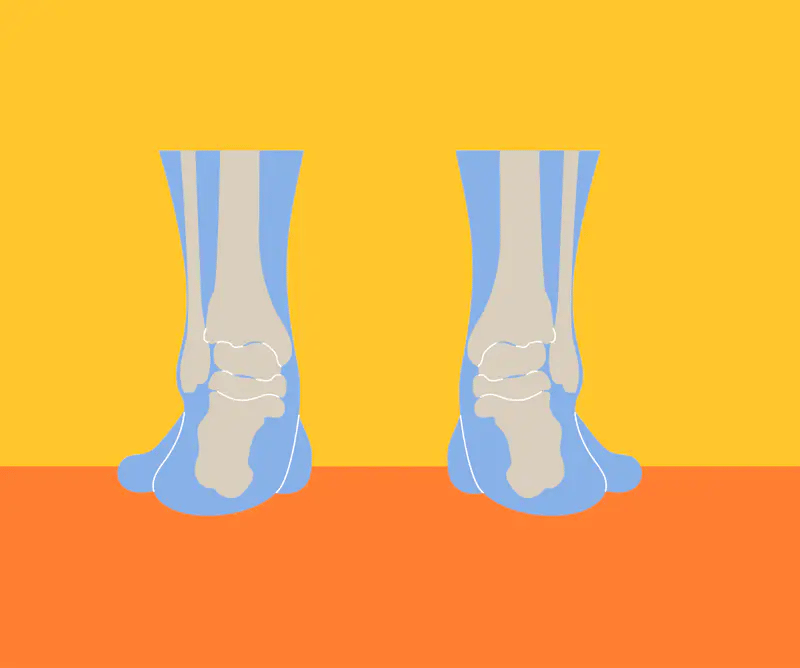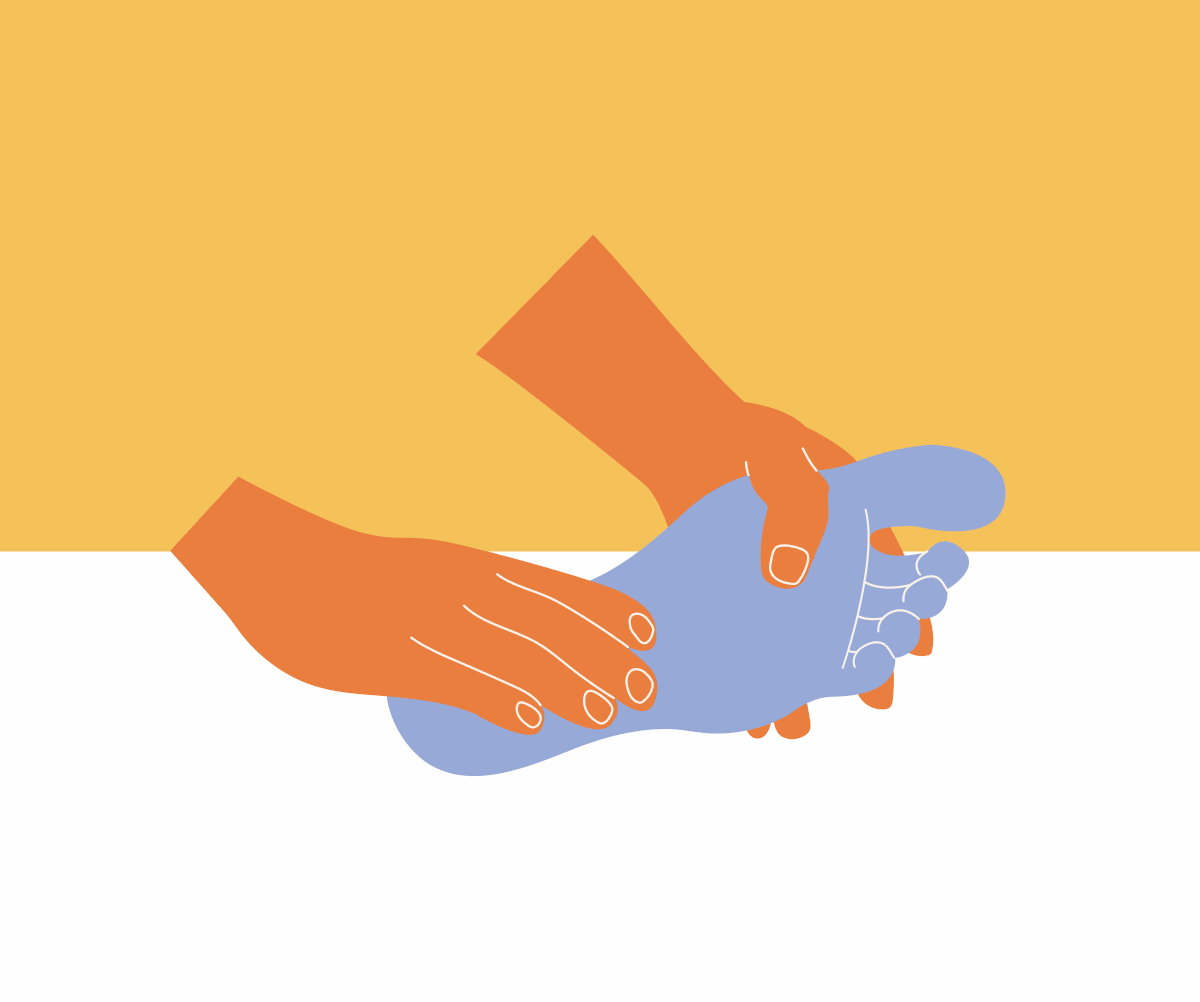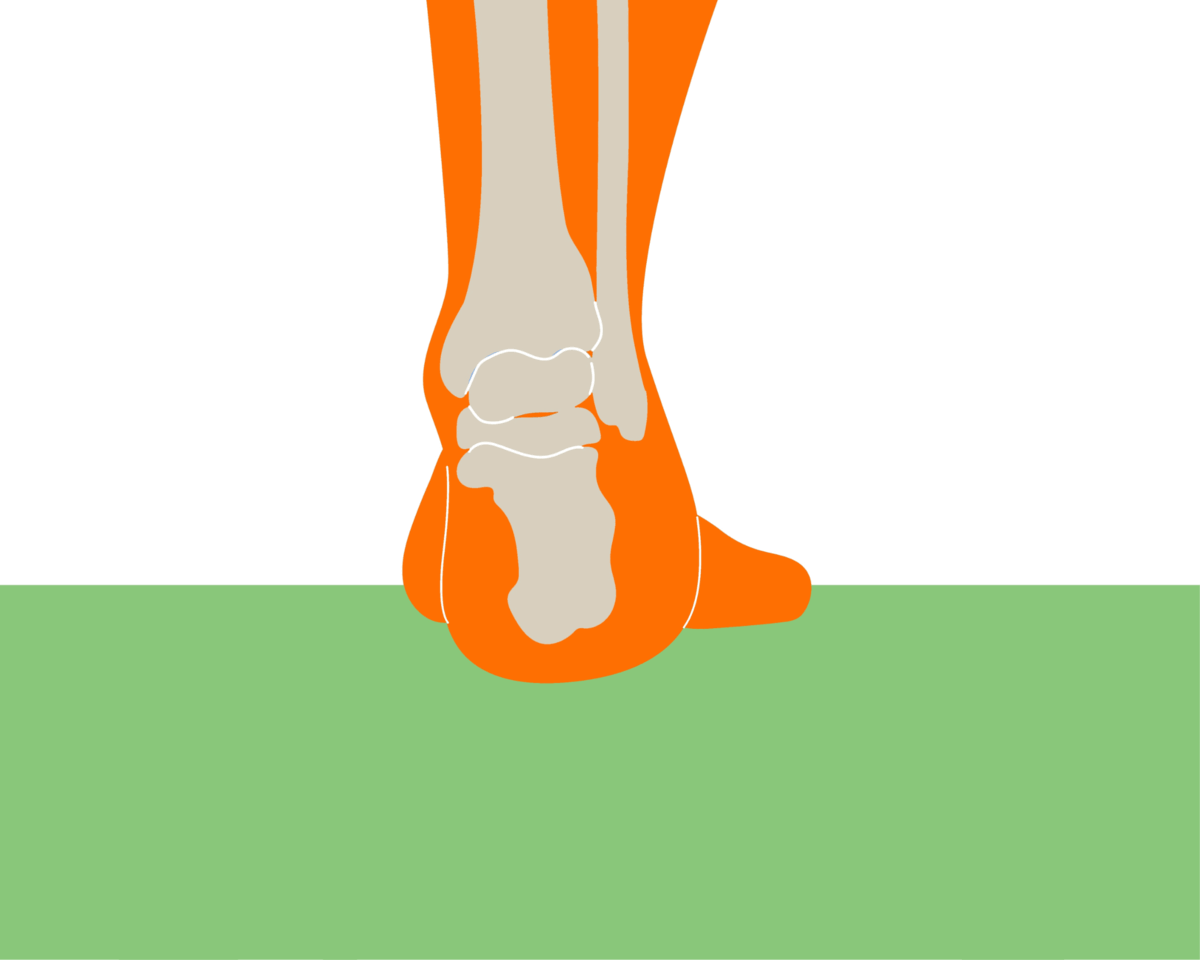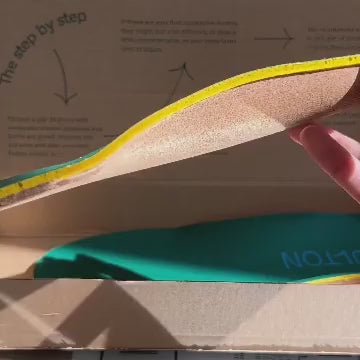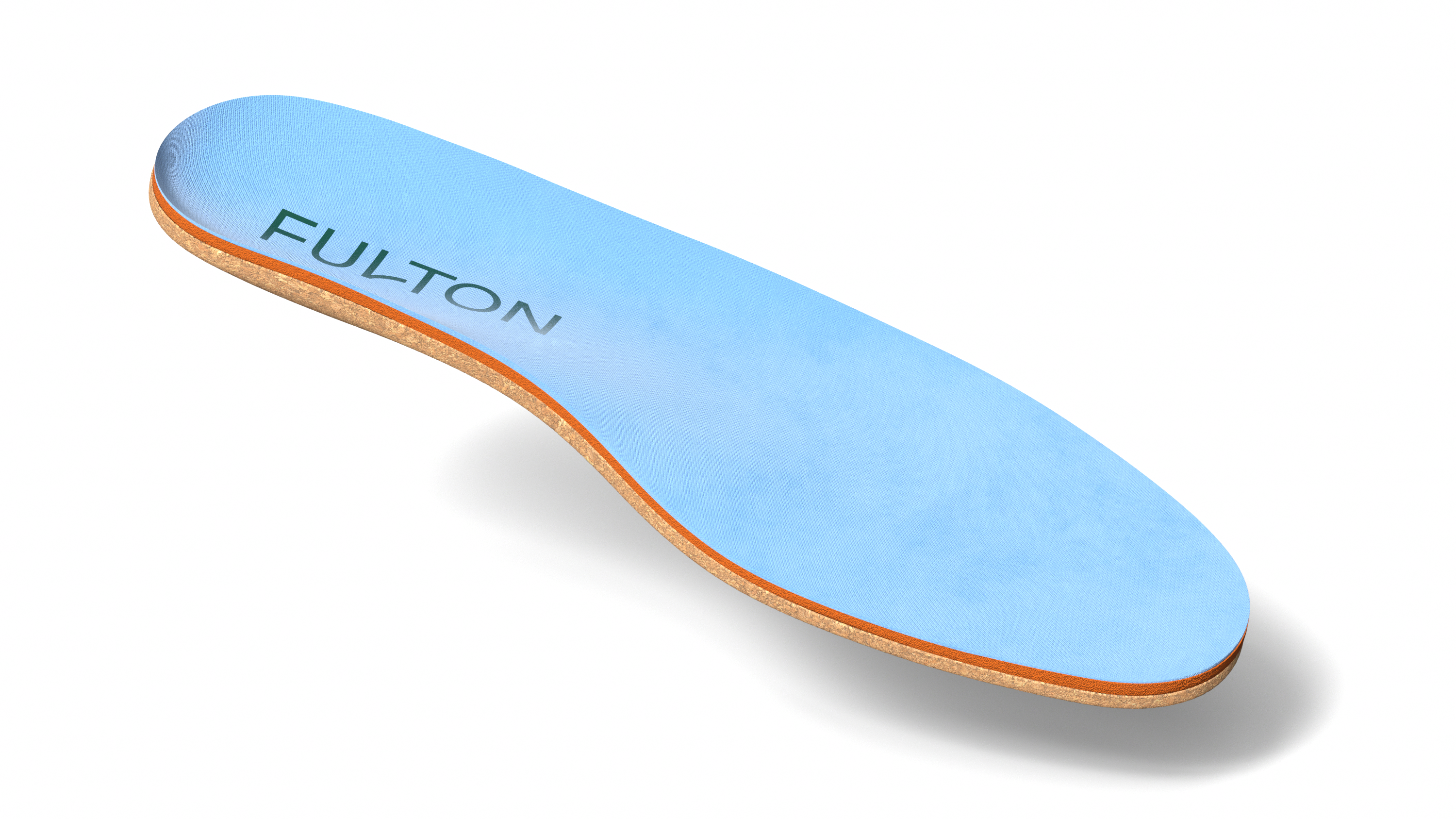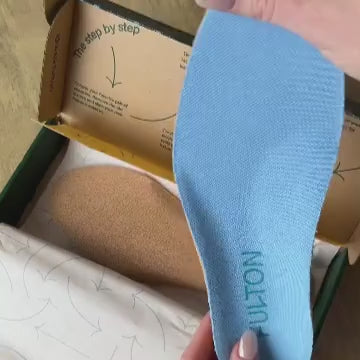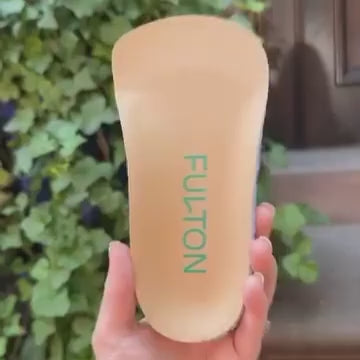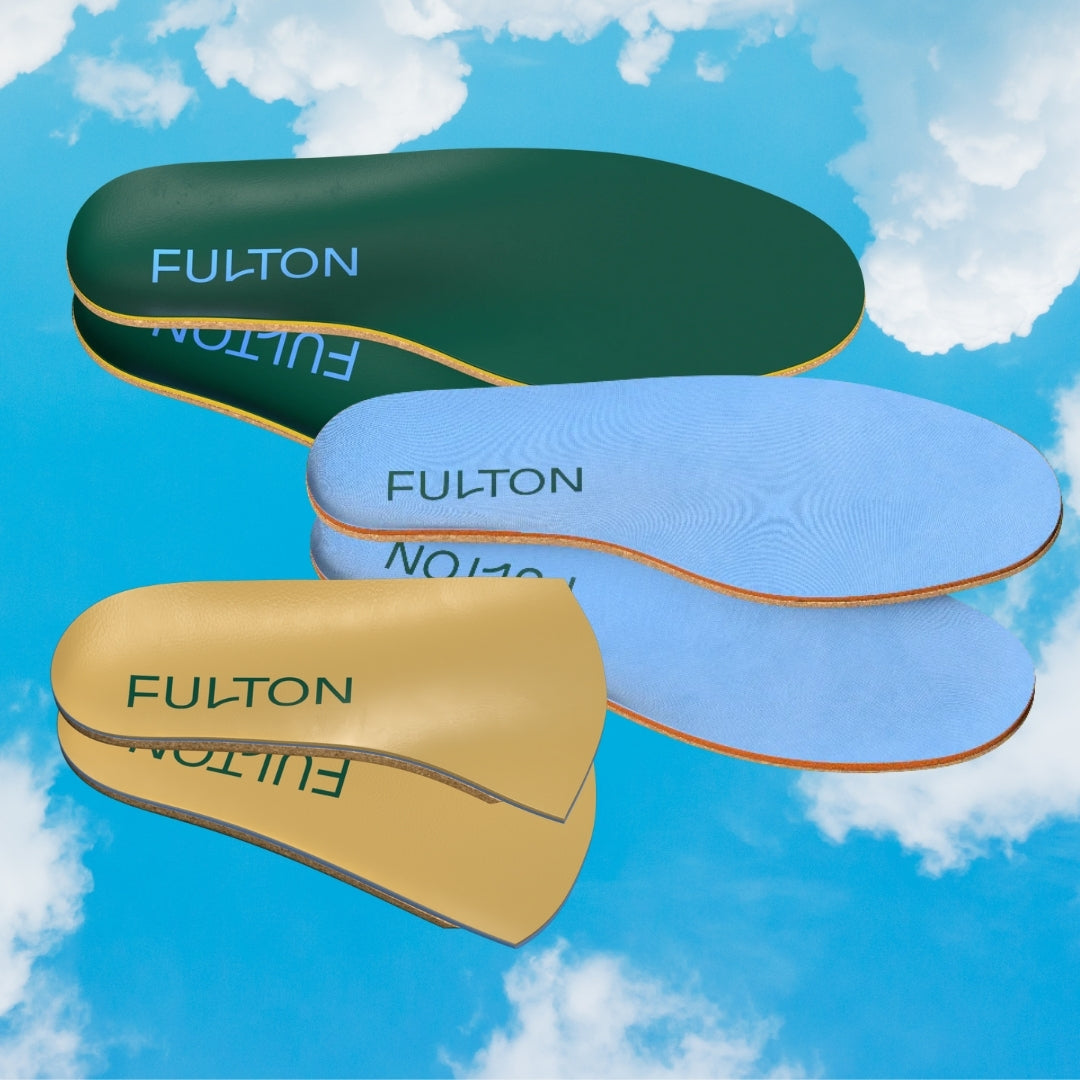Wearing the wrong shoes
For people with plantar fasciitis looking to alleviate pain, the first thing to consider is your shoes. Wearing the wrong shoes can trigger the onset of your Plantar Fasciitis. For example:
- Flat shoes, which offer no flat support, can put too much stress on your plantar fascia and cause it to tear.
- Shoes that are too tight or raise your heels significantly higher than your toes can also exacerbate your Plantar Fasciitis, as these kinds of footwear prevent your foot from molding into its natural position.
- The best shoes for Plantar Fasciitis are supportive and have a wide toe box.
- To ensure that your shoes have good arch support, consider adding custom molding insoles like Fulton insoles.
When thinking about the best shoes for Plantar Fasciitis they should have:
- Proper arch support: Supporting the arch is crucial to prevent the stretching of the plantar fascia, and alleviate pain and inflammation. Consider insoles for plantar fasciitis like Fulton insoles. Avoid shoes like flip flops and heels.
- Support and cushion in the heel: Pain from Plantar Fasciitis often arises in the heel and arch, to alleviate pain it's important that the shoe is adequately cushioned and comfortable
- Deep heel cups: To further stabilize the foot and prevent stretching of the plantar fascia
- Flat bases: Avoid shoes with heels to alleviate unneeded pressure from your foot
- Shock absorption: Choose shoes made from shock absorbing materials like cork and foam, this helps alleviate impact from the bottom of the foot.
Standing or sitting
What many don’t know is that sitting and standing for extended periods of time can further worsen the tear on your plantar fascia. In addition, standing on hard surfaces such as concrete or asphalt is one of the most important things to avoid with plantar fasciitis. If standing or sitting for long periods of time is a part of your daily routine, be sure to take breaks to relieve your Plantar Fasciitis.
Ignoring your pain
Braving through the pain and ignoring what aggravates your Plantar Fasciitis can make it worse. As we’ve mentioned, Plantar Fasciitis is a condition that can only be resolved when treated. So, don’t ignore your pain and further risk rupturing your plantar fascia.
Not stretching before a workout
Staying active and exercising can help you maintain a healthy lifestyle. However, failing to loosen your muscles before exercising can cause you to accidentally tear your muscles. Because of this, you should make it a habit to do warm up stretches, especially if you plan on going on a long run or doing vigorous fitness routines. In addition, stretching can also strengthen your Achilles tendon and calves, which can further stabilize your foot and support your plantar fascia.
The Most Important Tool: Supportive Insoles
Even the best shoes for Plantar Fasciitis will not have insoles with enough support or stability to prevent the condition. Good insoles, like those from help prevent the condition with:
- Customized arch support: Fulton insoles are designed to provide support to the arch of the foot and prevent the Plantar Fascia from stretching. This helps to perfectly align and support the foot and prevent additional stress from being placed on the arch and can also help to prevent further injury and alleviate pain.
- Cushioning foam: Fulton insoles have a layer of natural latex foam, which provides cushioning to the foot, in particular to the heel and ankle which can help alleviate pain and discomfort and prevent future injury.
- Deep heel cup: Fulton insoles’ deep heel cup helps to stabilize the heel and prevent needed strain from being put on the ankle and heel and ensures that the Plantar Fascia is not overextended.
What can you do for your Plantar Fasciitis?
Home remedies can help relieve the pain you experience. Icing your feet, resting, and drinking nonsteroidal anti-inflammatory drugs can help you feel better and get you back on your feet. However, it may take about six to 12 months before your feet return to normal. Because of this, it’s only prudent that you consult with a medical professional to treat your Plantar Fasciitis. Thankfully, you can get sound medical advice without having to struggle to walk to the nearest hospital or clinic.
One of the latest trends in health administration is the expansion of telehealth and how this service has made healthcare more accessible through remote tools. Now, you can easily reach physicians from hospitals, private practices, and home healthcare services through telecommuting platforms and relay to them your Plantar Fasciitis symptoms.
The best place to start is finding the supportive shoes for Plantar Fasciitis. Purchasing Plantar Fasciitis shoe inserts and adding them to your walking shoes or running shoes can also help relieve your Plantar Fasciitis, we recommend arch support inserts like Fulton.
Insoles, such as the one that you can find here at Fulton, can relieve Plantar Fasciitis pain by providing comfortable arch support while molding to the shape of your foot. Be sure to look for insoles that align your body from head to toe by supporting your unique arch type and walking style. To get some rapid relief, read this blog post about how to cure Plantar Fasciitis in one week.
To prevent your foot pain from taking over your life, be sure to squash the bad habits and use the advice we’ve discussed above.


